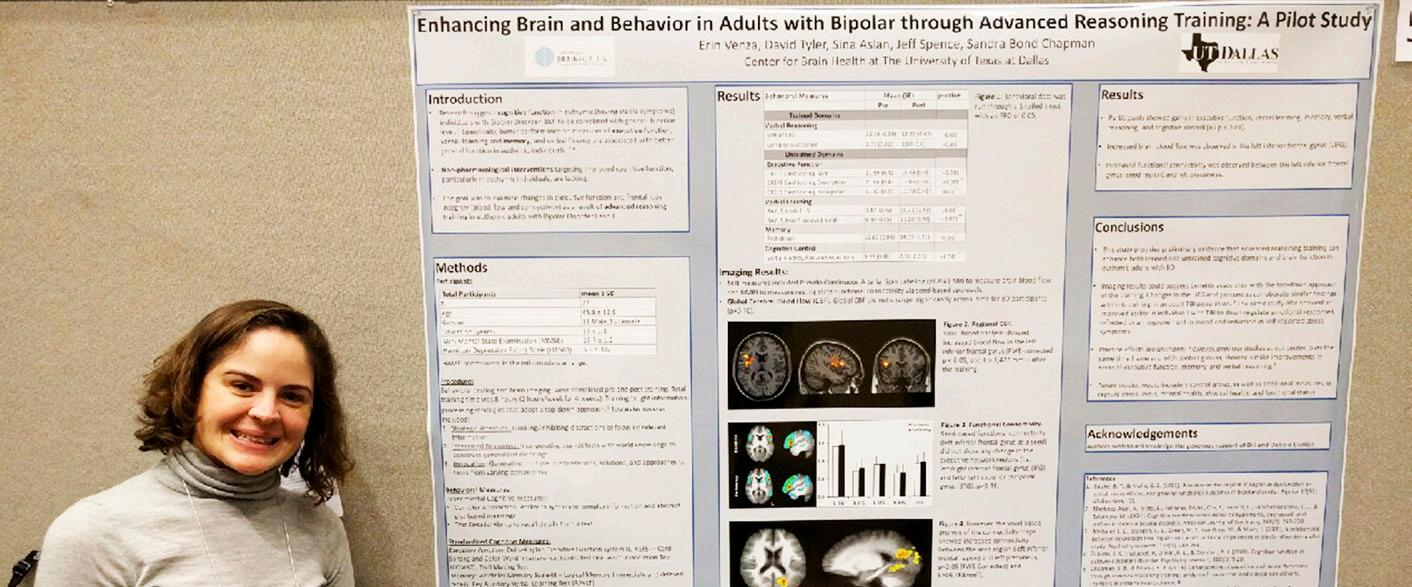
2 minute read
BRAINHEALTH ALUMNI ON THE MOVE JONATHAN’S STORY: OUTRUNNING TBI
from Newletter Q2 2016
by BrainHealth
In December 2002, Jonathan Swiatocha and his family were hit by a drunk driver. The then 10-year-old Jonathan sufered a traumatic brain injury (TBI). When the cars collided, the right side of Jonathan’s brain made impact with his skull, causing swelling and bleeding in his parietal lobes. The damage left him temporarily paralyzed on his left side. He was told that he would never be able to walk again, and several doctors gave his parents a long list of limitations he would experience for the rest of his life, including his cognitive abilities.
“He immediately took advantage of the invaluable resources at the Center, UT Dallas and UTSW and garnered the necessary information and funding to develop and perform studies of his own,” said Bart Rypma, Ph.D., associate professor at the Center for BrainHealth at UT Dallas and Meadows Foundation Chair.
Advertisement
This fall, Nicholas Hubbard, Ph.D., will head to the National Institutes of Health where he will be a postdoctoral fellow in the Laboratory of Neuroimaging under the guidance of Nora Volkow, M.D., Director of the National Institute on Drug Abuse (NIDA). Hubbard will join fellow Center for BrainHealth alumnus, Ehsan Shokri-Kojori, Ph.D., in Volkow's lab.
As a doctoral student and research assistant for five years in the NeuroPsychometric Research lab of Bart Rypma, Ph.D., Hubbard pioneered studies investigating cognition and neural systems in persons with depressed mood as well as authored works on brain activity in multiple sclerosis. In 2012 and 2013, he received Friends of BrainHealth awards to fund research into rumination and depression. Hubbard also received the Dianne Cash Fellowship in 2013 for his work in depression.
“Nick was a star right out of the gate,” said Rypma, associate professor at the Center for BrainHealth at UT Dallas and The Meadows Foundation Chair. “He came to us with excellent credentials and training and was champing at the bit to learn neuroimaging. He immediately took advantage of the invaluable resources at the Center, UT Dallas and UTSW and garnered the necessary information and funding to develop and perform studies of his own. As a result, Nick has gained a breadth of neuroimaging training that has equipped him with the skills necessary for a successful post-doc career, to develop his own research agenda, and to start a neuroimaging laboratory of his own one day.”
Over the last 14 years, Jonathan has focused on training his body and his brain to make physical and cognitive victories.
He began 12 days after the accident, taking his first step. He filled his days with speech, occupational and physical therapy sessions while experiencing the e fects of TBI – severe depression, anger, anxiety, loneliness, posttraumatic stress disorder and memory loss.
A year after the accident, Jonathan participated in a study at the Center for BrainHealth in which he worked with Lori Cook, Ph.D., director of pediatric brain injury programs, on strategies to improve his memory, strategic attention and bigpicture thinking. He continued to strengthen his cognitive function, participating in Strategic Memory Advanced Reasoning Training (SMART) where he learned strategies to enhance his brain performance in a small group setting and practiced brain exercises such as developing themes and abstracting take-away messages from detailed text and images.

Jonathan says that he still struggles with the ability to remember, reason, stifle negative thoughts, and communicate clear messages on a daily basis. He acknowledges that his recovery is an ongoing process, but refuses to let this injury define him.
Now, Jonathan not only walks but has developed a passion for running. He competes in races several times a year and has a big goal in mind: To be the first Olympic runner to have a TBI.

Jonathan’s career as a professional speaker also defies his initial TBI prognosis.
“I am thankful for my ability to run, but I’m also thankful for my ability to tell others about what life is like after a brain injury,” said Jonathan. “My hope is that my TBI recovery story helps provide hope and purpose for someone else after injuring their brain.”










